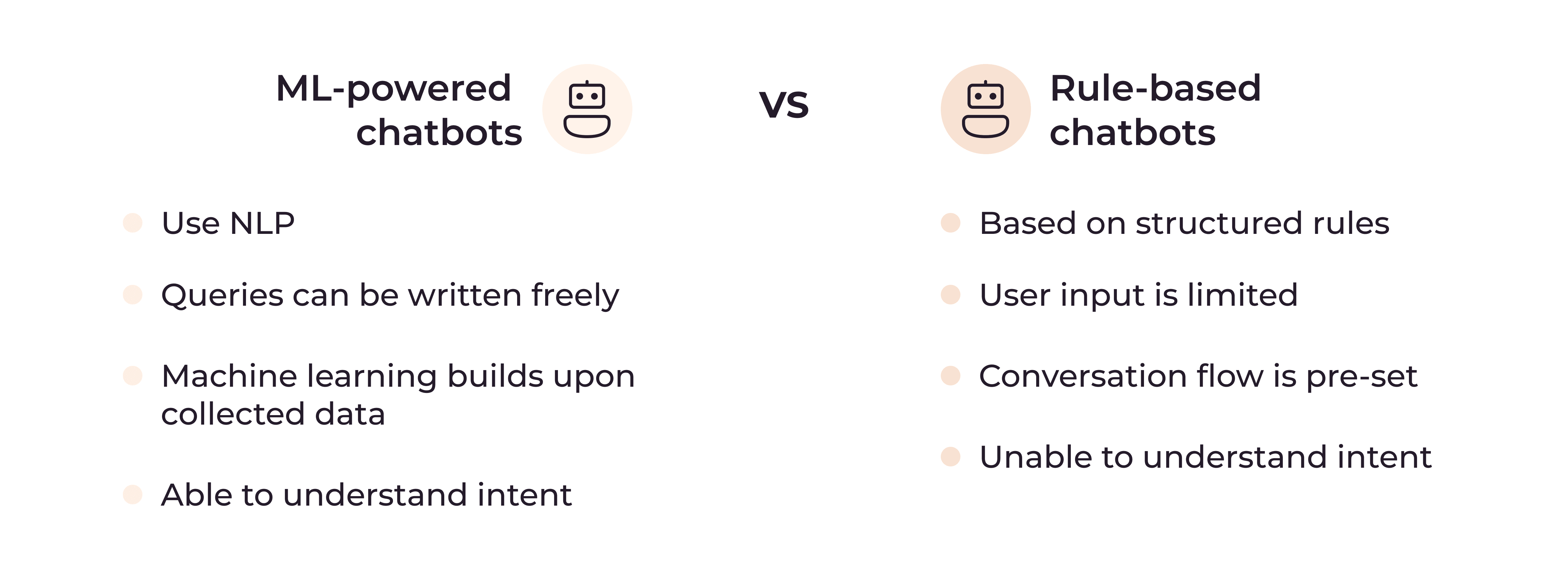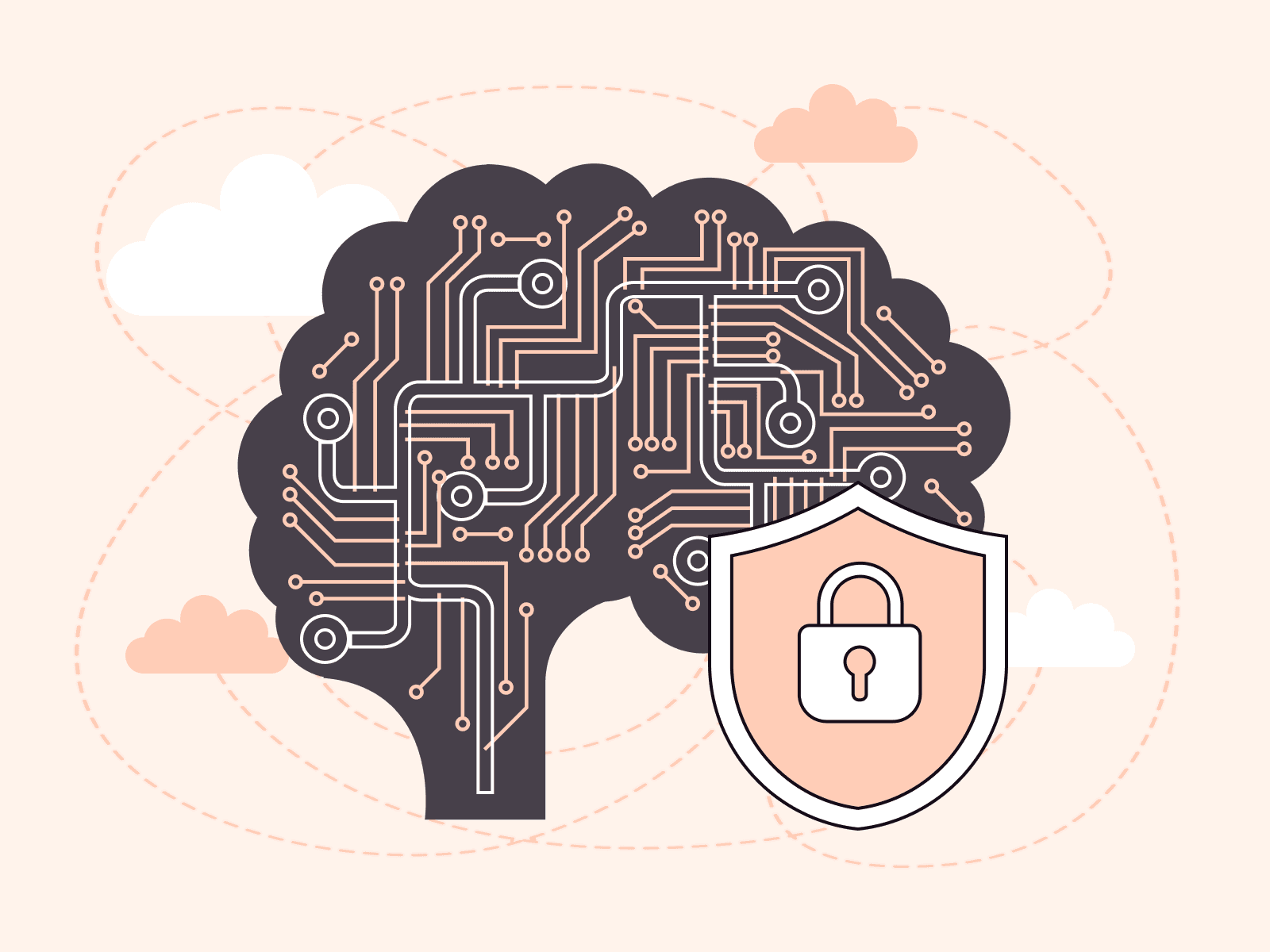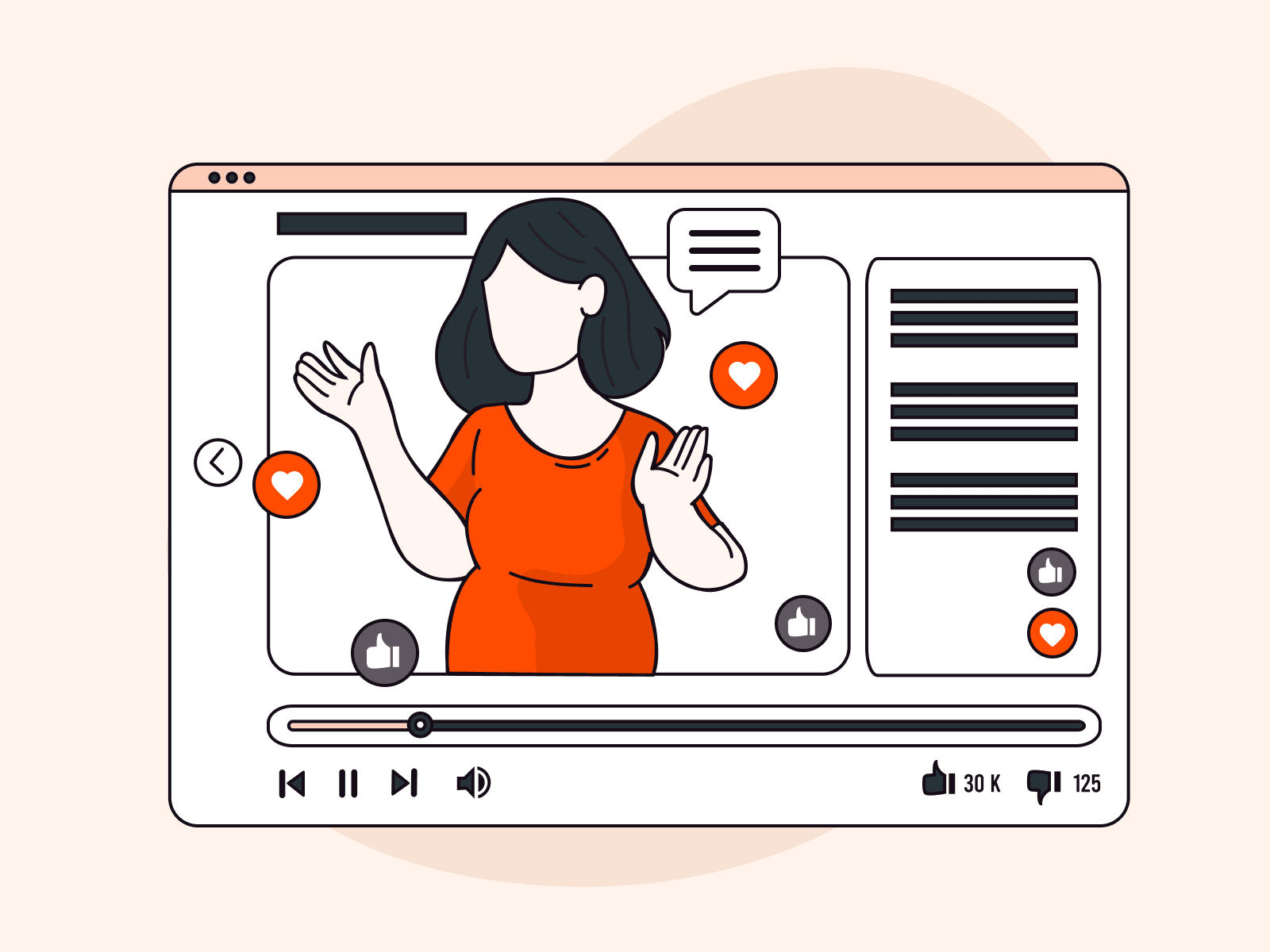Artificial intelligence chatbots are intelligent virtual assistants that employ advanced algorithms to understand and interpret human language in real time. AI chatbots mark a shift from scripted customer service interactions to dynamic, effective engagement. This article will explain types of AI chatbots, their architecture, how they function, and their practical benefits across multiple industries.
What Is an AI Chatbot?
An AI chatbot is a software program that uses artificial intelligence to engage in conversations with humans. AI chatbots understand spoken or written human language and respond like a real person. They adapt and learn from interactions without the need for human intervention. Examples include using Facebook Messenger to order from Dominos Pizza, house purchase information and virtual tours based on chat interactions from Home Boutique’s chatbot, and Siri and Alexa, conversational chatbots that can control smart homes, answer questions, and play music based on speech input.
Artificial intelligence chatbots are now an essential part of modern business. Unlike non-AI customer service technologies, they excel in providing personalized, real-time responses to users’ questions. For example, AI chatbots can assist with product selections, schedule appointments, and handle various tasks like customer service inquiries and supply chain optimization that previously required human intervention. This is transforming the way that businesses engage with their audiences, as well as aspects of everyday life, such as drafting personal emails and facilitating online shopping experiences.
Here’s an example of an AI chatbot interaction in a commercial beauty customer service context:

What Types of Chatbots Are There?
Most AI chatbots can be categorized into two types: rule-based chatbots and machine learning-powered chatbots.

Rule-Based Chatbots
Rule-based chatbots operate on preprogrammed commands and follow a set conversation flow, relying on specific inputs to generate responses. Many of these bots are not AI-based and thus don’t adapt or learn from user interactions; their functionality is confined to the rules and pathways defined during their development.
A non-AI rule-based chatbot on a bank’s website might guide users through a limited list of options like “Check my balance” or “Find an ATM.” If a user deviates from these predefined commands, the bot may respond with an error, as it’s limited to its pre-set rules and cannot adapt to unexpected inputs.
However, AI rule-based chatbots exceed traditional rule-based chatbot performance by using artificial intelligence to learn from user interactions and adapt their responses accordingly. This allows them to provide more personalized and relevant responses, which can lead to a better customer experience. An AI rule-based chatbot would be able to understand and respond to a wider range of queries than a standard rule-based chatbot, even if they are not explicitly included in its rule set. For example, if a user asks the AI chatbot “How can I open a new account for my teenager?”, the chatbot would be able to understand the intent of the query and provide a relevant response, even if this is not a predefined command. This allows AI rule-based chatbots to answer more complex and nuanced queries, improving customer satisfaction and reducing the need for human customer service.
Machine Learning-Powered Chatbots
Machine learning-powered chatbots, also known as conversational AI chatbots, are more dynamic and sophisticated than rule-based chatbots. By leveraging technologies like natural language processing (NLP,) sequence-to-sequence (seq2seq) models, and deep learning algorithms, these chatbots understand and interpret human language. They can engage in two-way dialogues, learning and adapting from interactions to respond in original, complete sentences and provide more human-like conversations.
For example, in the same bank website context, a chatbot could answer questions about investment products, help users with complex, individualized financial transactions, and identify and resolve potential issues before they escalate. For example, if historical data shows that customers performing a certain action often need customer service help with a specific element—say, they struggle to find their account number on a banking app—the ML-powered chatbot could explain how to find the account number upfront, anticipating the problem before it occurs. It could even detect tone and respond appropriately, for example, by apologizing to a customer expressing frustration. In this way, ML-powered chatbots offer an experience that can be challenging to differentiate them from a genuine human making conversation.
Specialized Chatbots
AI chatbots can also be trained for specialized functions or on particular datasets. They can break down user queries into entities and intents, detecting specific keywords to take appropriate actions. For example, in an e-commerce setting, if a customer inputs “I want to buy a bag,” the bot will recognize the intent and provide options for purchasing bags on the business’ website.
Who Uses AI Chatbots? AI Chatbot Use Cases
Currently, AI chatbots are best known in applications like Siri, Alexa, Google Assistant, and ChatGPT, providing generic conversational assistance for diverse use cases in personal and professional contexts alike. However, beyond this familiar use, AI chatbots have found many diverse and specific uses across industries. These tailored applications are meticulously trained to cater to the particular needs and nuances of different sectors. Here’s a glimpse at just a few of them:
- Automotive sector: A small chain of car dealerships might use artificial intelligence chatbots to assist customers in locating the perfect car from their cross-country inventory. By interpreting the customer’s needs through conversation, the chatbot can filter through options and provide detailed recommendations.
- Healthcare industry: AI chatbots in hospitals can expedite patient care by answering medical inquiries and scheduling appointments with specialists. For example, a mental health clinic might use a chatbot to conduct initial assessments, directing patients quickly and accurately to the right expert for further consultation.
- Smartphone repair businesses: A troubleshooting AI chatbot can offer immediate assistance with basic home troubleshooting for smartphones (or other electronic devices.) If the issue requires in-person attention, the chatbot can book an appointment with a skilled technician in-store. This frees up technician time, reducing wait times for customers.
- Travel agencies: In the travel industry, AI chatbots can act as a personal travel guide, helping users find flights and accommodations, and plan detailed itineraries. A specialized chatbot for adventure tourism could suggest off-the-beaten-path destinations based on a traveler’s preferences or needs, and even make reservations. For example, a traveler in a wheelchair or a family with young children—or any combination of needs—could get tailored travel plans.
- E-commerce for specialty products: A boutique that sells organic skincare products may employ an AI chatbot to help customers choose products tailored to their skin type. By asking a series of questions, the bot could recommend a personalized skincare regimen. The chatbot could additionally account for factors like budget and time spent on the skincare routine, creating an individualized recommendation.
- Financial institutions: Banks and financial services often use AI chatbots to provide real-time assistance with transactions, account inquiries, or investment advice. For example, a credit union might deploy a chatbot designed to help first-time homebuyers understand mortgage options and connect them with a mortgage specialist.
What Is AI Chatbot Architecture?
AI chatbot architecture is the sophisticated structure that allows bots to understand, process, and respond to human inputs. It functions through different layers, each playing a vital role in ensuring seamless communication. Let’s explore the layers in depth, breaking down the components and looking at practical examples.

User Interface (UI) Layer
The UI layer serves as the gateway for user interaction, facilitating both input and output. It includes:
- Voice interaction: This allows communication via voice commands, like asking Google Assistant for directions.
- Text interaction: This supports text-based communication. Facebook Messenger bots, for example, can respond to text queries.
Front-End Systems Layer
The front-end systems layer encompasses the UI layer discussed above, taking its functions one step further by managing the underlying functionality that allows users to interact with the chatbot, handling user input, generating responses, and tracking user sessions on platforms like Facebook Messenger, WhatsApp Business and Google Hangouts. This layer also includes the logic that determines how the chatbot behaves, such as how it responds to different user prompts or how it escalates issues to human customer support. Here, NLP plays a significant role by interpreting human language into a form computers understand. Practically, this is done through various techniques, including:
- Tokenization, which breaks user input into tokens, identifying key words. For example, “I like to play basketball,” would be tokenized into the following tokens: “I,” “like,” “to,” “play,” and “basketball.”
- Entity recognition, which identifies entities like “New York” in a travel query, for example.
- Sentiment analysis, which analyzes the emotion behind words, such as anger in a frustrated customer service chatbot interaction.
Conversation Management Layer
This layer ensures coherent and logical conversation flow. Here, two processes are at play:
- Dialogue management, which controls the direction of conversation by asking clarifying questions or providing relevant responses.
- Session management, which keeps track of ongoing conversations, like remembering past shopping interactions.
Integration Layer
This layer links the chatbot with external systems and databases, managing the flow of data between the chatbot and these systems by performing:
- API integration, which connects to third-party services, such as fetching flight details from an airline.
- Database retrieval, which pulls information from internal databases, like accessing a patient’s medical history.
- Routing user traffic requests through the Node.js server/traffic server to link the user’s queries to the specific functions and databases needed to provide accurate responses.
Learning and Large Language Models (LLMs) Layer
The integration of learning mechanisms and large language models (LLMs) within the chatbot architecture adds sophistication and flexibility. These two components are considered a single layer because they work together to process and generate text.
Learning
Learning mechanisms enable adaptive interactions and personalized responses. Here’s how they function:
- User behavior analytics (UBA): This observes user actions and adapts to them. For example, a music recommendation bot might suggest songs based on a user’s past listening habits.
- Adaptive learning: This enables the chatbot to adjust its behavior over time, such as a tutoring bot that adjusts the difficulty of questions based on a student’s performance.
Large Language Models (LLMs)
LLMs are specialized components designed to understand and generate nuanced text by analyzing vast datasets, thereby excelling at tasks like contextual conversation and content summarization. Here’s how they work:
- Q&A sessions: LLMs enable detailed question-and-answer interactions, like pulling specific product details from a database.
- Toxic comment detection: They can identify harmful or inappropriate comments, ensuring a safe community environment.
- Language translations: LLMs facilitate seamless communication across various languages, bridging language barriers.
- Auto-compilation of commands: They simplify the development process by automatically converting small pieces of code called snippets into a format that the computer can run, eliminating the need for developers to perform this step manually.
Custom Integrations and Question Answering System Layer
Finally, the custom integrations and the Question Answering system layer focuses on aligning the chatbot with your business needs. Custom integrations link the bot to essential tools like CRM and payment apps, enhancing its capabilities. Simultaneously, the Question Answering system answers frequently asked questions through both manual and automated training, enabling faster and more thorough customer interactions.
How AI Chatbots Work

AI chatbots operate through a multi-stage process. While the general flow of this process is applicable to most ML and AI processes, some of the techniques in this process—such as natural language processing, contextual understanding, and real-time conversational analytics—are unique to AI chatbots.
Input
Input channels include APIs and direct integration with platforms such as WhatsApp and Instagram. The input stage is initiated when a user submits a textual query; it involves preprocessing steps like lowercasing and punctuation removal. These preprocessing steps standardize the text, making it easier for the chatbot to understand and process the user’s request, thereby improving the speed and accuracy of the chatbot’s responses.
In a customer service scenario, a user may submit a request via a website chat interface, which is then processed by the chatbot’s input layer. This is often handled through specific web frameworks like Django or Flask. These frameworks simplify the routing of user requests to the appropriate processing logic, reducing the time and computational resources needed to handle each customer query.
Analysis
The analysis stage combines pattern and intent matching to interpret user queries accurately and offer relevant responses.
Pattern Matching
The analysis and pattern matching process within AI chatbots encompasses a series of steps that enable the understanding of user input. For example, pattern matching in a weather chatbot identifies the keyword “weather” and the location “Paris” by scanning the user’s input for these predefined terms, allowing the chatbot to generate a tailored response about current weather conditions in that city.
Pattern matching steps include both AI chatbot-specific techniques, such as intent matching with algorithms, and general AI language processing techniques. The latter can include natural language understanding (NLU,) entity recognition (NER,) and part-of-speech tagging (POS,) which contribute to language comprehension. NER identifies entities like names, dates, and locations, while POS tagging identifies grammatical components.
Intent Matching
The concept of intent matching is specific to AI chatbots. It involves mapping user input to a predefined database of intents or actions—like genre sorting by user goal.
For instance, when a user inputs “Find flights to Cape Town” into a travel chatbot, NLU processes the words and NER identifies “New York” as a location. Intent matching algorithms then take the process a step further, connecting the intent (“Find flights”) with relevant flight options in the chatbot’s database. This tailored analysis ensures effective user engagement and meaningful interactions with AI chatbots.
Output
The output stage consists of natural language generation (NLG) algorithms that form a coherent response from processed data. This might involve using rule-based systems, machine learning models like random forest, or deep learning techniques like sequence-to-sequence models. The selected algorithms build a response that aligns with the analyzed intent.
In an e-commerce setting, these algorithms would consult product databases and apply logic to provide information about a specific item’s availability, price, and other details.
Continued Learning
In the learning phase, convolutional neural networks (CNNs) analyze spatial data like images, identifying patterns such as shapes or colors, while recurrent neural networks (RNNs) examine sequential data like sentences, wherein they recognize the order of words. Through iterative training on new data, these artificial neural networks fine-tune their internal parameters, thereby improving the chatbot’s ability to provide more accurate and relevant responses in future interactions.
Reinforcement learning algorithms like Q-learning or deep Q networks (DQN) allow the chatbot to optimize responses by fine-tuning its responses through user feedback. When the chatbot interacts with users and receives feedback on the quality of its responses, the algorithms work to adjust its future responses accordingly to provide more accurate and relevant information over time. In an educational application, a chatbot might employ these techniques to adapt to individual students’ learning paces and preferences.
Challenges and Benefits of AI Chatbots for Businesses
AI chatbots present both opportunities and challenges for businesses.
Benefits
- 24/7 availability, providing instant responses and thus increasing customer satisfaction while reducing overhead costs.
- Handling multiple queries simultaneously, offering efficiency and scale without additional staffing.
- Automation of repetitive tasks, freeing up human resources for more complex jobs.
- Streamlined order processes, making ordering easier for customers and businesses.
- Natural conversations and tailored experiences, paving the way for upselling and cross-selling.
Challenges
- Up-to-date data collection and accuracy, which can’t always be guaranteed by chatbots.
- Difficulty understanding nuanced human emotions, leading to less effective interactions.
- Algorithmic limitations, hindering chatbots from effectively resolving intricate or multi-layered queries.
Conclusion
AI chatbots offer an exciting opportunity to enhance customer interactions and business efficiency. In a world where time and personalization are key, chatbots provide a new way to engage customers 24/7. The power of AI chatbots lies in their potential to create authentic, continuous relationships with customers.
Explore the future of NLP with Gcore’s AI IPU Cloud and AI GPU Cloud Platforms, two advanced architectures designed to support every stage of your AI journey. From building to training to deployment, the Gcore’s AI IPU and GPU cloud infrastructures are tailored to enhance human-machine communication, interpret unstructured text, accelerate machine learning, and impact businesses through analytics and chatbots. The AI IPU Cloud platform is optimized for deep learning, customizable to support most setups for inference, and is the industry standard for ML. On the other hand, the AI GPU Cloud platform is better suited for LLMs, with vast parallel processing capabilities specifically for graph computing to maximize potential of common ML frameworks like Tensorflow.
Find out which solution works best for your AI requirements.
Related articles
Subscribe to our newsletter
Get the latest industry trends, exclusive insights, and Gcore updates delivered straight to your inbox.






